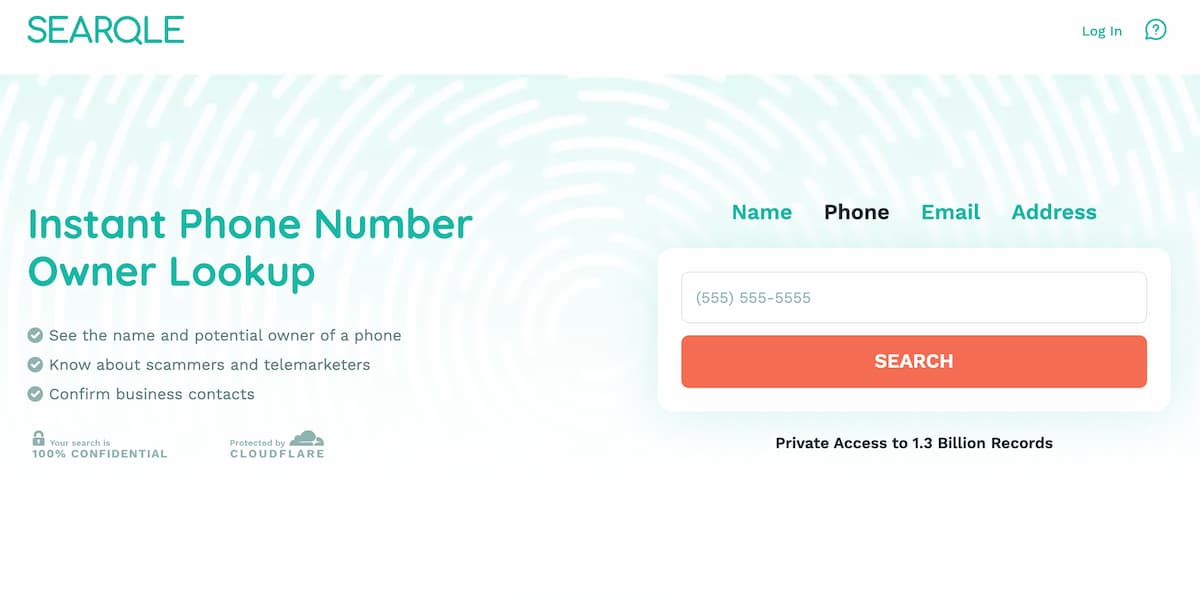Over 3.3 billion people across the globe now use VoIP, and the number is expected to grow by 11.8% by 2028. But if you’re just learning about VoIP, you probably wonder, “What does a VoIP number mean?”
In this article, we reveal what it is, how it’s different from a regular phone number, and why VoIP numbers are so popular. Plus, we’ll show you how you can use it and who uses it in common. As a bonus, we show you how to track unknown callers, VoIP or not, using a trusted tool.
What Is a VoIP Number?
A VoIP (Voice over Internet Protocol) number is a phone number that, instead of relying on traditional copper wires, allows you to make and receive calls using an internet connection. Zoom, Microsoft Teams, and Skype are all VOIP services. You can also get dedicated VoIP numbers that look the same as regular phone numbers from VoIP vendors.
So, what is a VoIP number used for? Most companies, independent contractors, and regular people employ VoIP because it’s more cost-effective and convenient, and you don’t need to be confined to a physical device.
How Do VoIP Numbers Actually Work?

To better understand the VoIP number’s meaning, it helps to look at how the technology works behind the scenes. Rather than transmit your voice down copper cables like landlines or network towers like cell phones, VoIP technology digitizes your voice, breaks it into packets of data, and sends it over the Internet to the recipient.
Here’s the easy explanation:
- You talk into a VoIP-capable device (phone, computer, or software application).
- Your voice is converted to data and transmitted over the internet.
- The receiving device converts the data back to sound.
The number is never tied to a SIM card or a device. Instead, it’s a flexible connection you can access from your smartphone, tablet, computer, or even a special VoIP desk phone.
However, whether it’s VoIP or a standard mobile phone, every number is tied to an identity, and you can find out who that is by using the proper tools.
Using Searqle to Uncover the Caller

Suppose you receive a call from an unknown number. Your initial reaction may be to ignore it completely. But there is a better option—Searqle. This service is specifically meant to help you find who is behind a phone number, including VoIP numbers.
Just enter the number into Searqle, and you’ll get detailed results, often including the name, location, associated businesses, or social profiles. But it also digs deeper than a basic web search and lets you:
- Do reverse email lookups and identity verification
- Check if a number is VOIP or linked to scam reports
- Look up driving and criminal records
- View the marital status and household contacts
VoIP vs. Traditional Numbers: What’s the Difference?
The answer to “What’s a VoIP number?” becomes even clearer when you compare it to a traditional phone number. While both may be used for receiving and making calls, the underlying technology is way different:
| Feature | VoIP Number | Regular Phone Number |
| Connection | Internet-based | Landline or cellular network |
| Cost | Less expensive (Even free for long-distance) | International calling at higher rates |
| Portability | Use anywhere with Wi-Fi | Tied to a location or SIM card |
| Features | Call forwarding, AI voicemail, etc. | Basic calling/SMS |
| Setup | Instant activation | Requires hardware installation |
| Scalability | Instantly scalable | Need physical additions |
| Call Quality | Excellent clarity, as long as you have a stable internet connection | Reliably clear |
You may also wonder: What does VoIP mean after a phone number? If “VoIP” is written after a number, it simply indicates that it’s a virtual number. However, you dial it just like any regular number since most modern devices are already equipped for VoIP calls. The only real difference is that the call is routed through data networks instead of phone lines.
Who Uses VoIP Numbers in the Real World?

- Small businesses love VoIP because they can establish a local presence in different markets without needing a physical office there. It also cuts costs and provides them with access to features that used to be reserved for big corporations, such as automated attendants, virtual call centers, and voicemail transcriptions.
- People who travel internationally use VoIP numbers over Wi-Fi to avoid unnecessary roaming charges associated with standard phone numbers.
- Remote workers also find it convenient to have a separate VoIP number to maintain work-life separation. In addition, features such as voicemail-to-email further boost their communication convenience and efficiency.
- And sure, some robocallers and scammers use VoIP as well. It’s easy to get a VOIP number and make cheap calls in bulk. But that doesn’t mean all VoIP calls are bad. The regular numbers could also be as vulnerable as VOIP numbers.
Here’s How to Get a VoIP Number
Getting your own VoIP number is simpler than setting up a normal phone plan. Here’s what to do:
- Select a VoIP provider: Some popular ones are Google Voice, RingCentral, Zoom Phone, and Grasshopper.
- Select a plan: Create an account and sign up for the proper plan based on the calling allowances and features you will require.
- Select your number: Most services allow you to select your area code or even a vanity number (such as 1-444-HOTELS) for an added fee.
- Get a VoIP phone or download the app: Most carriers support mobile apps, desktop software, or dedicated VoIP desk phones.
- Make some calls: You’re ready to go.
Depending on the carrier, you may even receive free or low-cost calling plans, particularly for international calls. And most plans also have features such as call recording, analytics, and integration with your email or CRM.
Conclusion
VoIP numbers may sound geeky initially, but they’re a humble, versatile instrument you can leverage in your day-to-day activities—work or personal purposes. The point is understanding what a VoIP phone number is and how it works, which hopefully this guide has shed light on.
If an unknown caller appears, use Searqle to uncover their identity and be safe with any communication method.


